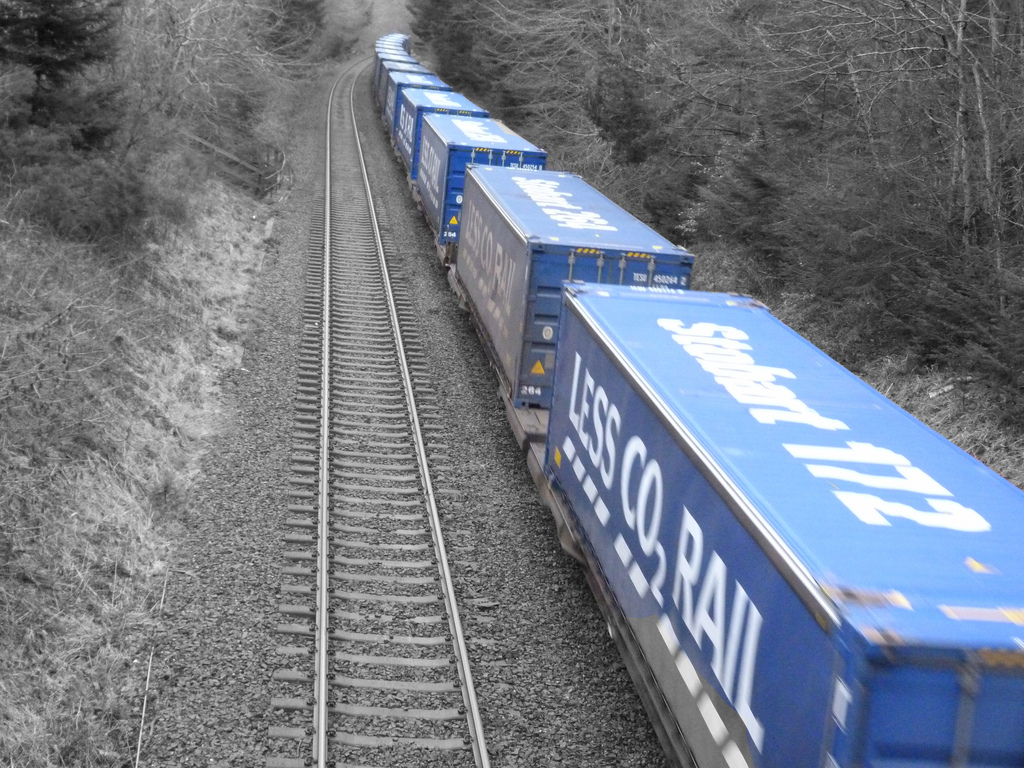Dear Tesla,
I’m excited about the recent announcement of your US-based battery manufacturing facility, which you’ve named the “gigafactory”, but I have a few concerns. The project sounds promising: you’ll be producing 500,000 electric vehicles per year by 2020, employing 6,500 people, installing new wind and solar power, and building the facility in either Nevada, New Mexico, Texas, or Arizona. But while you’re still deciding which site to pick can I offer you some advice? It’s all about location, location, location—and here’s why.
You can site the facility in a location with a low(er) carbon electricity grid.
First, I want to commend your efforts to build new solar and wind facilities to power the gigafactory because that can reduce the emissions of producing more and more batteries. Ideally you could power the entire plant with renewable energy.

The author test driving a Tesla in Palo Alto, CA in March 2014.
However, in case you need power from the local electricity grid you may want to consider where you’re plugged in. The State of Charge report from my colleagues at UCS looks at the global warming pollution from plugging in an electric vehicle (EV) based on location. This impacts the production of EV batteries as well. When I do a quick comparison of the average* electricity grid emissions using EPA’s 2010 eGrid data I find the greenhouse gas emissions from a lower-carbon grid mix (like Nevada and parts of Texas) can be as much as 46 percent lower than a higher-carbon grid mix (like parts of New Mexico).
Choosing a location based on how clean the local electricity grid is, or how much renewable energy you’ll be able to utilize, may not be the top criteria for you, but it’s definitely an important one for the overall impact of your products. Both strategies—installing renewables and locating the facility in a low carbon electricity grid—will help to reduce overall emissions of producing batteries for your EVs.
*For this calculation I used average instead of marginal emissions from the electricity grid. The estimate also accounts for transmission losses and upstream emissions from electricity production as estimated by the GREET model.
Building the facility around a dense population with employee accessibility is important.
It is great to hear this facility will create new US-based jobs, but it is imperative this facility is not located in the middle of nowhere. Although there are significant space requirements which restrict where it can be built, building a facility that employs 6,500 people who then drive to and from work could result in significant emissions. Having access to public transit and/or locating near a city with a dense population to reduce the average commute distance could reduce these emissions.
A possible added benefit of being near a city could be all the people that could come out to see the gigafactory. I know I’d love to see it!
Look for a location that can utilize low carbon transportation for moving goods.
This one is a bit trickier, because there are some tradeoffs in the emissions related to the transportation of moving goods for the states you’ve already selected (NM, NV, TX, and AZ). The name of the game is to maximize the use of the most efficient freight modes. In terms of carbon emissions (excluding air transportation), ships and trains have lower carbon emissions per ton moved than trucks do, though trucks are getting better!

Relative to other modes of freight transportation, trains produce fewer carbon emissions. Source: Duncan Brown.
There are two major considerations for your goods movement: getting materials to your facility and then getting the batteries to the vehicle assembly plant. First, you have all the raw materials and components that make up the batteries coming in to the facility. I assume these materials come from all over the world, and the best way to transport them is by ships. So locating near a port would be beneficial. But it looks like only Texas has that available. And unfortunately Texas is the farthest away from Fremont, CA where you will assemble the final vehicles. Which means all the batteries produced at the facility will have to be transported to Fremont, and if done by truck could result in significant emissions.
But fret not, I have thought of another emissions reducing solution: what if you were to transport the batteries by rail and locate the facility near a railroad? Doing so could minimize the amount of truck transportation needed, and might even save you on transportation costs as well.
Finally, I can’t wait for the projected battery cost reductions of 30%!
The most exciting part is really reducing the costs of batteries, and you’ve given yourself a very ambitious goal of 30% cost reduction. The reason this is the best part is because it could have major impacts on the battery industry as a whole. This includes making batteries more accessible for other EVs and lowering the costs of energy storage. Lowering energy storage costs could help solve some challenges related to adding more renewables to our electricity grid, making it even cleaner. The opportunity to have trickle-down effects into other applications is promising.
I look forward to hearing more as this project moves forward.
Sincerely,
Rachael
